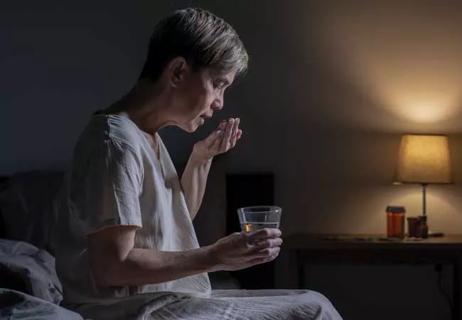Advertisement
A Cleveland Clinic task force has developed a multidisciplinary, multilevel care system to help kids in crisis

More than one in three U.S. high school students experienced persistent feelings of sadness or hopelessness in 2019, according to the Centers for Disease Control and Prevention. And that was before the unprecedented strains of the COVID-19 pandemic.
Advertisement
Cleveland Clinic is a non-profit academic medical center. Advertising on our site helps support our mission. We do not endorse non-Cleveland Clinic products or services. Policy
“We’ve seen an escalating rate of mental health concerns, aggression and suicide attempts in children and adolescents since 2008, partly due to global stressors that started with the housing bust. Then the pandemic hit,” says Joseph Austerman, DO, Section Head of Child and Adolescent Psychiatry at Cleveland Clinic. “Rates of behavioral disturbances, mood and anxiety disorders, suicide attempts, suicidal thinking, drug use and eating disorders have all skyrocketed.”
In response, Cleveland Clinic recently created a task force to develop service lines to address suicide, aggression, anxiety, trauma and mood disorders in children and adolescents, as well as to step up support for primary care providers.
A CDC report indicates that the share of high school students with persistent feelings of sadness or hopelessness rose to more than 44% between January and June of 2021. Nearly 20% had seriously considered suicide.
“Everybody is struggling,” says Dr. Austerman, “although female, Black and Hispanic children are hit a bit harder than other populations. And we are a microcosm of those trends here in Northeast Ohio.”
In a new integrated care model created under the Cleveland Clinic task force, a team of psychologists, psychiatrists, therapists, behavioral health social workers, pharmacists and other caregivers will assess children and adolescents and provide behavioral and medication management in addition to wraparound services. They also will coordinate care with other hospital systems, community resources and primary care providers.
“This is a radical departure from our traditional care model, where patients come in and see one provider,” says Dr. Austerman, co-chair of the task force. “It’s a center-based, teams model focused on crisis intervention and stabilization for kids who come into the emergency department or to primary care providers in crisis.”
Advertisement
The task force also is creating pathways for children once they are stabilized so they can be managed in medical homes in the community – which may not be in the Cleveland Clinic health system. “We recognize at Cleveland Clinic that what we do best is manage acute crises,” Dr. Austerman explains. “Once patients transition to long-term care, our teams can take on more challenging and complex patients.”
The novel approach will include several components, including a suicide prevention center currently in development and a school-based mental health service line that’s been in place for several years.
The suicide prevention center will focus on obtaining a psychiatric assessment within 24 hours of a child or adolescent presenting with acute suicidal ideation at a primary care provider or emergency department.
“We will conduct an acute assessment and behavioral interventions in group formats that are proven to de-escalate kids and build skills,” says Dr. Austerman.
After patients complete the two- to four-week program and are stabilized, they will move to a center-based management program for approximately six months to address underlying problems such as anxiety, mood disorder or trauma. Then patients will transition to primary care or individual therapy, if needed. The team also uses evidence-based suicide prevention apps so kids can access clinical de-escalation tools on demand.
The school-based mental health service line began with an in-person mental health clinic at Lakewood High School in a suburb of Cleveland. Students can visit the clinic for mental health check-ins and receive care services.
“We are integrating with as many school systems as possible to provide consultation, educate school counselors and connect schools to Cleveland Clinic mental health services so teachers have a lifeline and we can better understand these kids’ worlds,” says Dr. Austerman.
A separate task force is building a program aimed at primary care providers, which includes embedding psychiatrists and psychologists within regional pediatric offices so they can offer counseling and connect providers to wraparound services within Cleveland Clinic or the broader behavioral health community.
Dr. Austerman offers two main pieces of advice for other health systems that want to adopt an integrated care model for adolescent patients.
First, get buy-in from the top on down. Leadership teams need to recognize the mental health crisis and commit to solving it. “The current bottom line is not more important than giving teams the space to build programs that will affect future generations,” he observes.
Second, collaborate with other hospitals and community partners. Cleveland Clinic is coordinating services with other local children’s and general hospitals as well as community organizations such as the National Alliance on Mental Illness.
“We are building connections so we can serve Northeast Ohio in a more unified and well-coordinated manner,” Dr. Austerman says.
Advertisement
Cleveland Clinic hopes that its integrated care approach will benefit not only patients, but also healthcare professionals who are struggling to provide care on their own.
“We are developing a safety net so we can eliminate redundancies, improve access and provide a compendium of care all the way from acute patients to stabilized kids who return to normal daily life,” Dr. Austerman concludes. “If we are successful with this model, it may represent the future of mental healthcare.”
Advertisement
Advertisement

Suicidality reported by over 10% of pediatric epilepsy patients with no mental health history

Multidisciplinary program helps budding clinicians explore the human dimensions of patient care and medical research

Program empowers Black stylists to provide emotional first aid

Positive emotions, low impulsivity appear to safeguard against weight gain, other comorbidities

Consultation service provides comprehensive care to patients with anxiety, PTSD, schizophrenia, and other high-risk disorders

Study shows a growing openness to the clinical potential of psychedelic treatments

Urine test strips and point-of-care testing may be key to slowing opioid epidemic

Study sheds light on how clinicians addressed their patients’ pain and insomnia during the pandemic